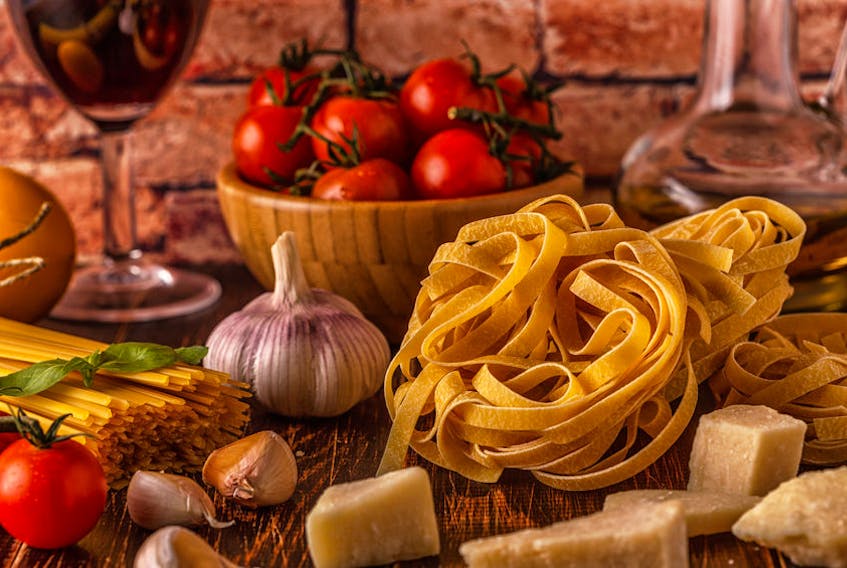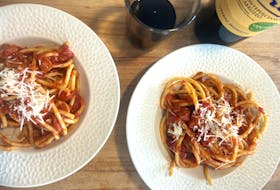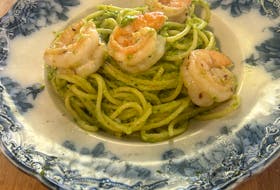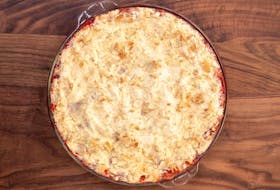Join Mark DeWolf, SaltWire Network's creative director of food and drink, in our Follow A Foodie newsletter as he follows his taste buds across the East Coast. Subscribe here.
Few cuisines are as satisfying as Italian. Unlike the technique driven nature of their French neighbours, the Italian table is rooted in the simplicity of using good ingredients, and few of them.
I, like most North Americans, grew up on mom’s pasta sauce, which was loaded with ground beef, tomatoes, onions, garlic (often in its salty powder form) sweet peppers, oregano and just about anything else found in the fridge. Toss in some spaghetti and shredded ‘Parmesan’ cheese – you know the powdery yellow stuff - and this was Italian dining to me as a child.
Of course, I have come to learn the basic Italian tomato sauce has almost no resemblance to this over complicated childhood memory. A simple sauce is made by sweating soffritto (this is the Italian version of mirepoix and is a mix of diced onions, diced celery, diced carrots) until soft. My secret is to then add in a splash of milk to help break down the vegetables. Once the milk has evaporated add in cans of San Marzano or local plum tomatoes, passata (tomato puree) and a little tomato paste and, if you want to be truly Italian, a very generous amount of salt. The Italian pinch of salt involves three or four fingers - not two. Bring to a boil and then reduce to a simmer. Let simmer on low for hours. You can pass the sauce through a food mill or blender at the end or simply leave in its rustic form. If leaving in its rustic form and using local tomatoes, peel the tomatoes before using. If blending the sauce keep the skins on.
As for the right pasta, my philosophy is the simpler and lighter the sauce, the finer the pasta. Hence, I serve spaghettini with oil-based sauces, spaghetti and linguine with simple tomato sauces and thicker noodles such as tagliatelle and pappardelle with ragu (typically made with braised meat and tomato) sauces. Where’s the garlic in the sauce? To quote my Italian mama Teresa Galli (she’s not really my mom, but like a second mother to me) “the onions and the garlic don’t talk.”

Keep it fresh
There is a long debate about the qualities of dry versus fresh pasta. I personally argue for the melt in your mouth texture of a freshly made egg-based pasta; especially when making ragu-style pasta dishes. While seemingly simpler to purchase pre-made pasta, it is remarkably easy to make your own. You don’t even need a pasta maker. All you need is a willingness to work some dough, a rolling pin and a pizza cutter and this recipe from Bon Appetit.

The diversity of the Italian table
We tend to homogenize Italian cuisine as pizza and pasta, and everything made from tomatoes. However, this does an injustice to the diverse cultural history of the boot. From the spice root influence of Northern Italy and the particularly diverse mix of Spanish, French, Greek, Phoenician, and African influences of its islands (Sardinia, Sicily) there are nuances of flavours to be found throughout the country. Add in the influence of geography and suddenly the Italian table is so much more complex than most give it credit.
I think this is encapsulated in Mimi Thorisson’s recipe for Sardinian ragu with saffron tagliattelle which blends Italian pasta making traditions with a spice originally brought to Italy from Spain via the Middle East.

There’s more to Italy than pasta and pizza
While pasta is unquestionably a big part of many Italian families daily dining habits, the country’s cuisine is more diverse and complex than this Italian staple. As you travel north, exiting Emilia-Romagna (home to Bolognese, Parma ham, Balsamic Vinegar and Parmigiano-Reggiano) and into the northern provinces of Veneto, Lombardy and Piedmont cooking moves away from the typical pasta and tomato-based sauces of central Italian and into deeper, richer, alpine flavours based more on rice, polenta, braised meats, cool climate vegetables and an exchange of olive oil for butter.
Pasta is still a mainstay but even it changes in the north. I love Piedmont’s Tajarin pasta made only with the yolks of the egg. I like to toss it with duck confit, butter, fresh herbs and a little grated cheese.
A great example of a typical autumn dish from Northern Italy is this recipe for Poached pears with radicchio and Castelmagno. Note: you can substitute Parmigiano-Reggiano or Grana Padano for the Castelmagno cheese.

In Italy wine is red
While Italy does produce vast quantities of white wine, including oceans of pleasantly forgettable Pinot Grigio, most Italians think of wine as red. While as a sommelier I should not provide an overarching blanket statement to a country’s wine production, I will. Italian red wines typically have a distinctive Italian tang that makes them great food wines.
I have been particularly impressed with the willingness of many Italian vintners to pull back the alcohol in favour of even fresher, livelier styles that shine on the table. The light and fruity nature of Sicilian Frappato has become a darling of the sommelier community and I was recently impressed with the fresh flavours of Marcobarba Barbarossa, a unique blend of Merlot, Cabernet, Raboso and other biodynamical grown varietals from Veneto, available for purchase at Bishop’s Cellar in Halifax.
For more of a widely available option pick up a tangy Chianti Classico DOCG from your local liquor monopoly as a good all-purpose Italian red.
See you next week when we'll offer more great food and drink recipes. Until then, keep following your foodie dreams.
~ Mark DeWolf

Mark DeWolf is a connoisseur of all things food and drink. He's a creative director with SaltWire and local fare is his specialty. Watch Mark whip up seasonal plates in his video series, In a Jiffy, and go deeper with food trends and kitchen challenges weekly









